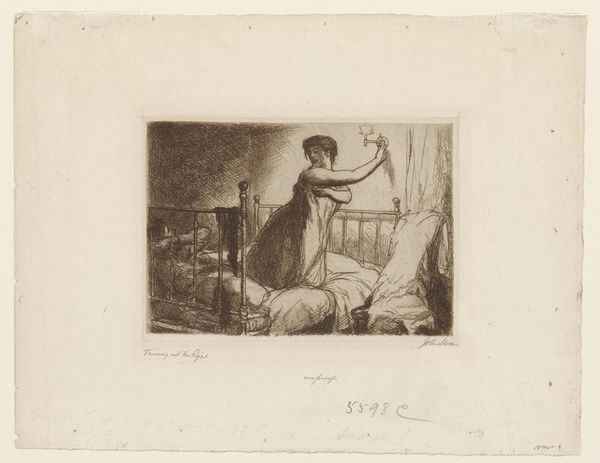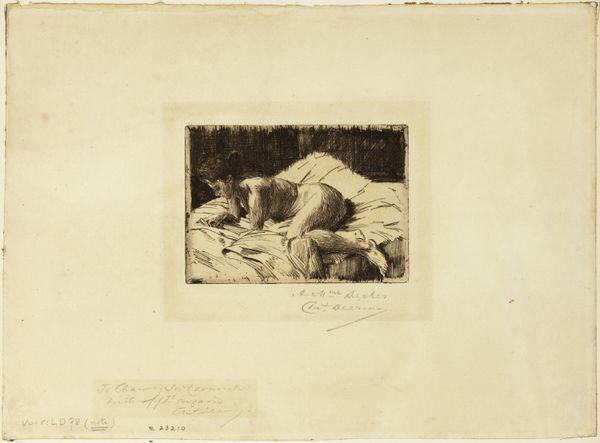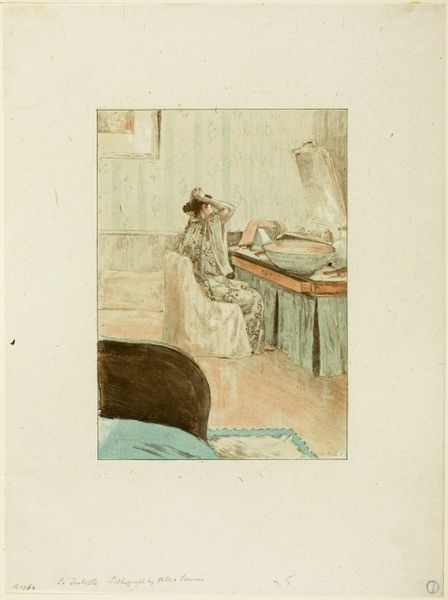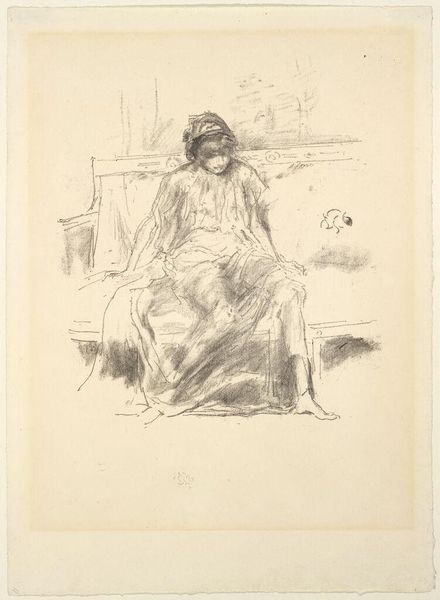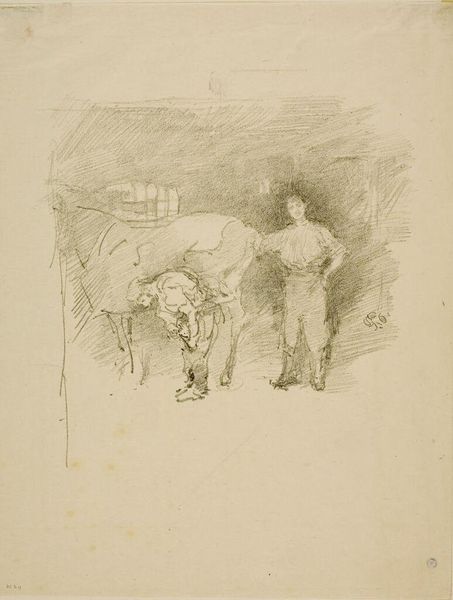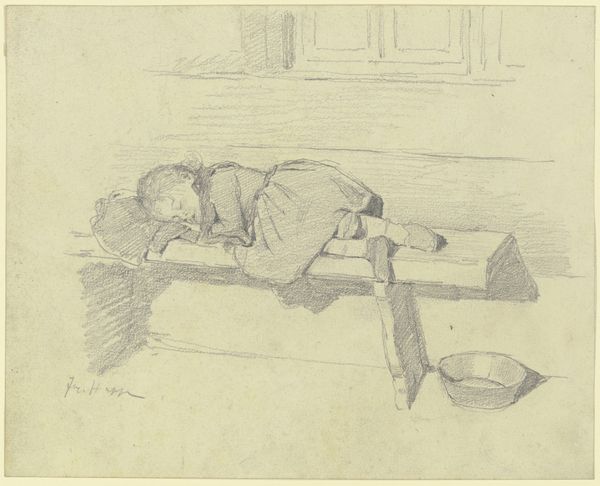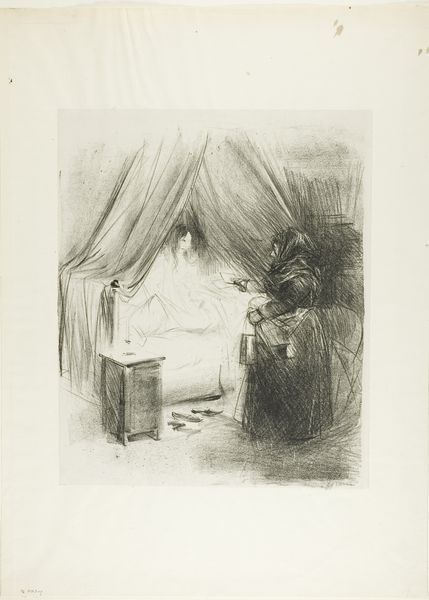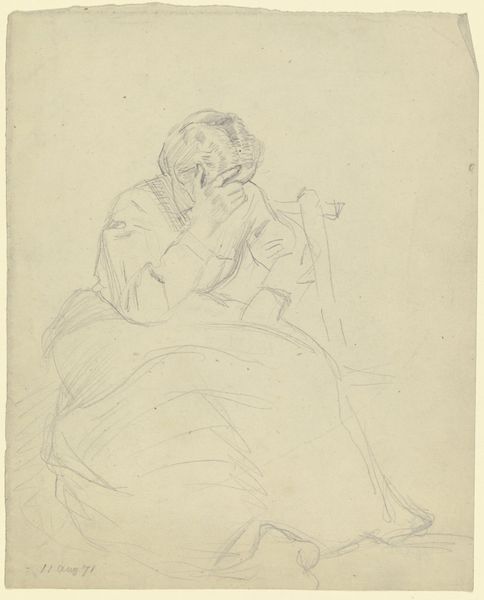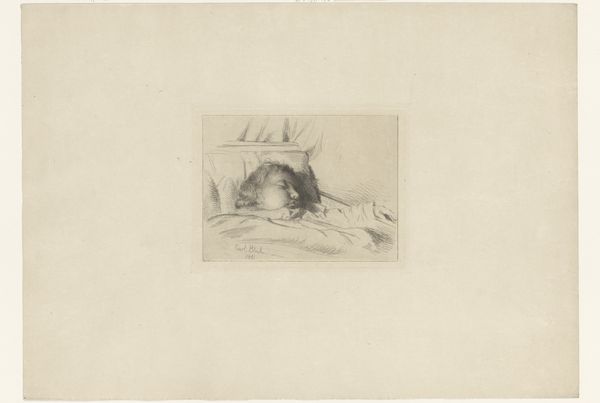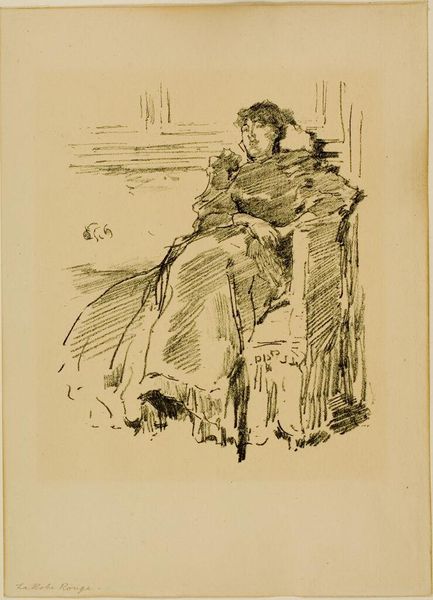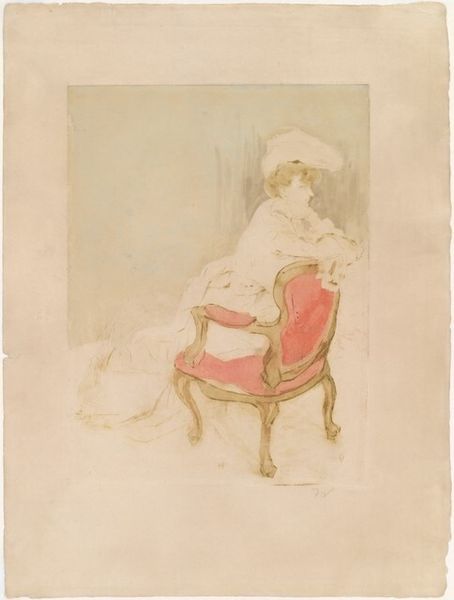
Dimensions: image: 16 x 21 cm (6 5/16 x 8 1/4 in.) sheet: 25 x 31 cm (9 13/16 x 12 3/16 in.)
Copyright: National Gallery of Art: CC0 1.0
Curator: Robert Austin’s "Child in Bed," created around 1929, is a watercolour drawing that seems to capture a fleeting moment of childhood introspection. What's your initial impression of it? Editor: A sense of quietude, definitely. The pale washes of color create this dreamlike, almost ethereal quality. It's like peering into a memory. There's something very private about it, a hushed stillness. Curator: Absolutely. Austin often depicted scenes of domestic life. Given its time, the drawing can be considered within the context of interwar intimacy – exploring the everyday experiences and emotional landscapes of a child within a specific historical and social framework. How might ideas of gender roles be performed within such a limited context? Editor: Visually, I see how the heavy draping of the bedclothes creates a visual motif – a protective shield. Throughout art history, beds have been symbolic of vulnerability but also refuge, havens against the external world. The child, half-hidden, embodies a transient phase – neither wholly present nor entirely absent. It resonates with the psychological ideas that shaped early childhood education in that period. Curator: Good points. And the use of watercolour is interesting here as well. Watercolor, by its very nature, possesses an ephemeral quality that amplifies that transience. There’s a gentle melancholy in its faded tones, perhaps reflective of broader societal anxieties that affect how one raises children to embrace a potentially unstable future. Editor: It is a study of tonal values where the image evokes rather than precisely renders. Think about that splash of muted pink that forms the carpet. The overall design lends a timeless character to an intimate encounter. There are universal elements of home that have shaped childhood in modern cultures. Curator: True, the seeming lack of specific details invites viewers to project their own experiences and understandings of childhood onto the scene. The figure can signify anyone from a son or daughter to someone they once were, so this may lead to broader cross-cultural accessibility through a shared motif. Editor: Perhaps it is Austin's skillful manipulation of light and shadow and suggestive visual shorthand, that lingers long after one has moved on to the next artwork. Curator: A sensitive piece for thought, especially in regards to understanding intimate spaces in uncertain times.
Comments
No comments
Be the first to comment and join the conversation on the ultimate creative platform.
